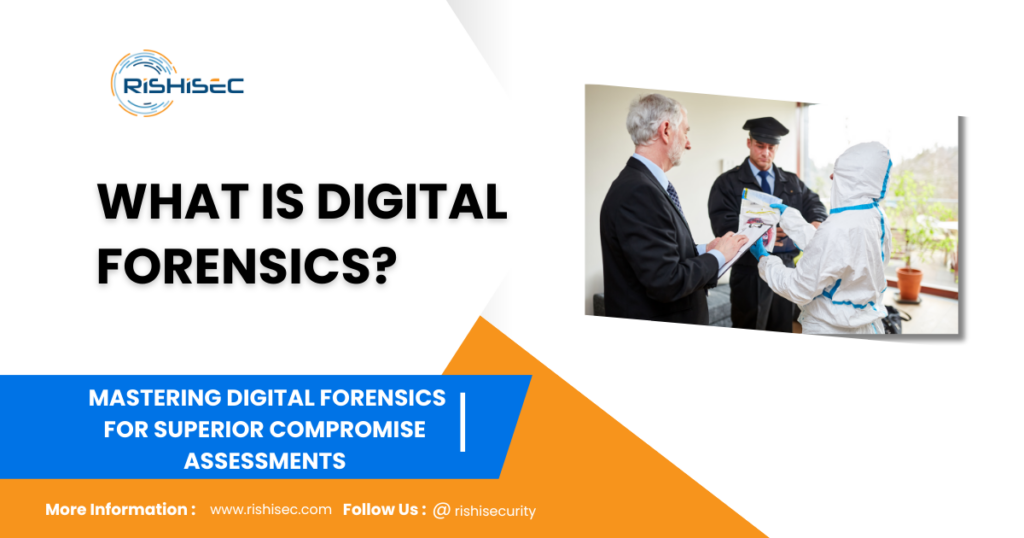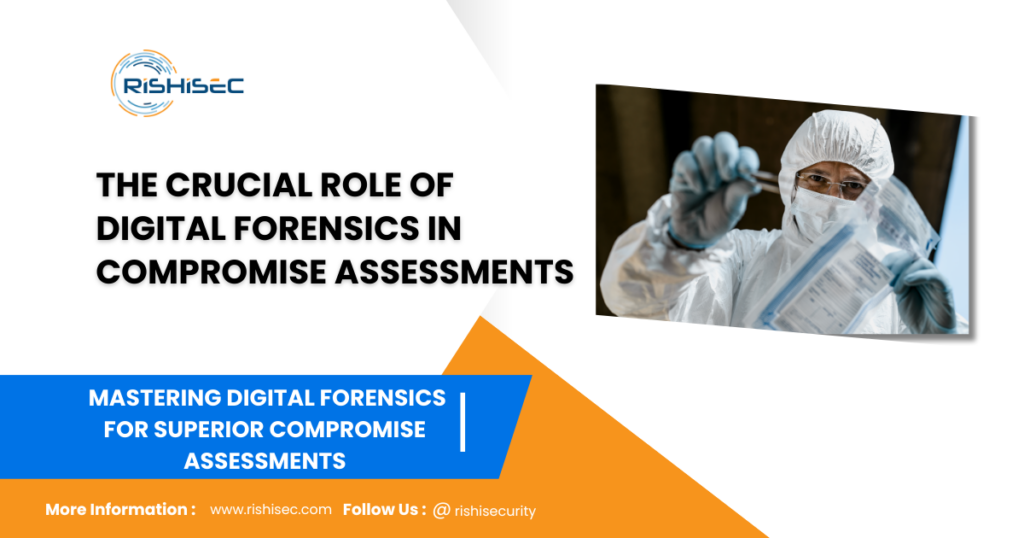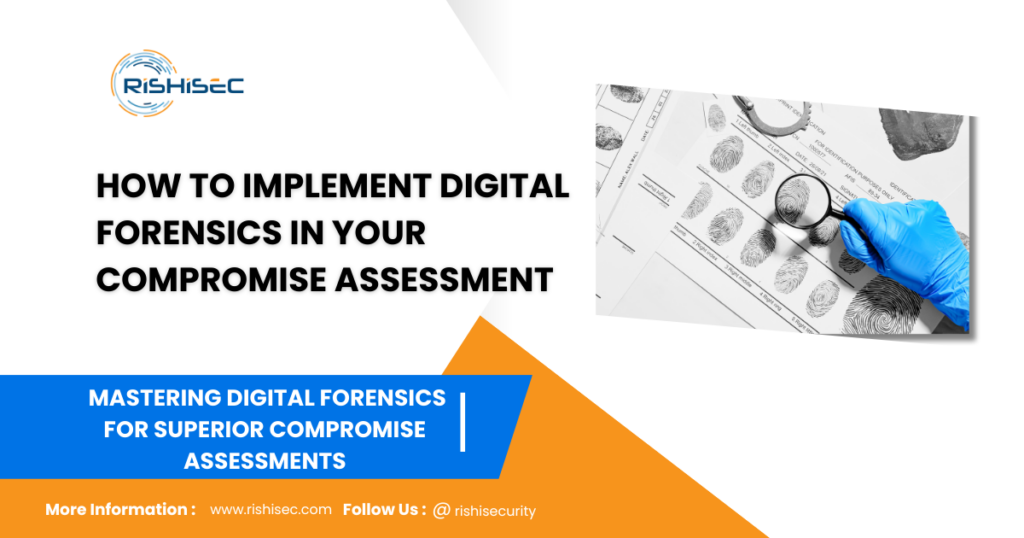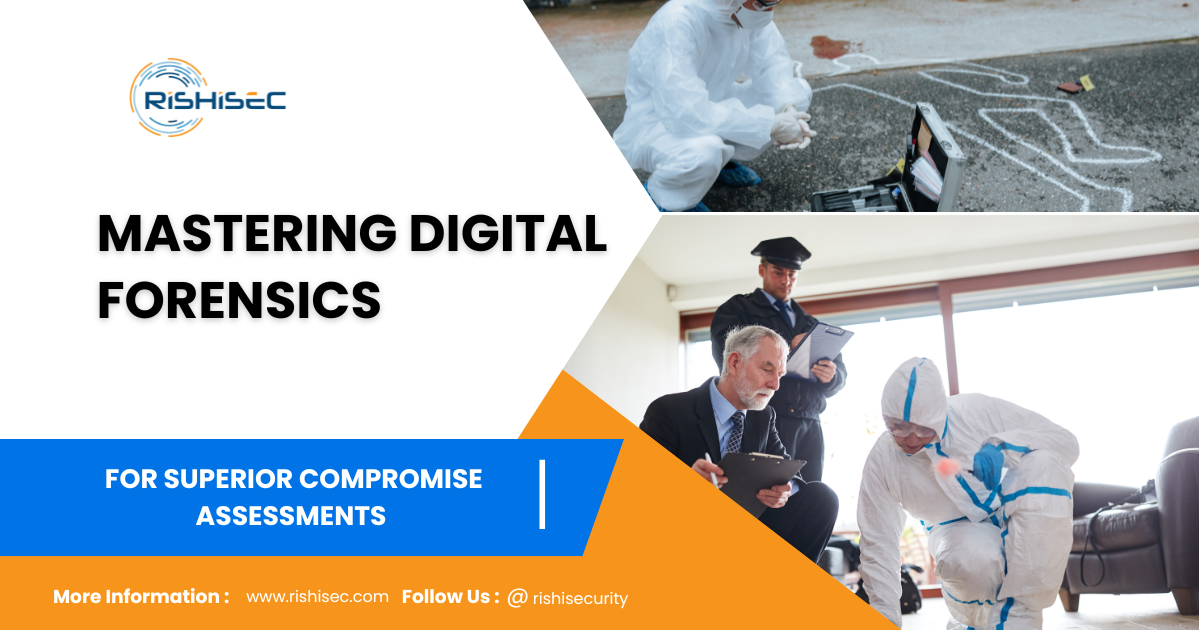Contents
- 1 Mastering Digital Forensics
- 2 What is Digital Forensics?
- 3 The Crucial Role of Digital Forensics in Compromise Assessments
- 3.1 1. Revealing the Full Picture of Security Breaches
- 3.2 2. Enhancing Incident Response
- 3.3 3. Supporting Legal and Compliance Requirements
- 3.4 How to Implement Digital Forensics in Your Compromise Assessment
- 3.5 Real-World Example: Digital Forensics in Practice
- 3.6 Best Practices for Digital Forensics
- 4 CTA
Mastering Digital Forensics
In today’s fast-paced digital world, cyber threats are becoming increasingly sophisticated. To stay ahead, organizations need robust tools and techniques to understand and address security breaches effectively. Mastering Digital Forensics for Superior Compromise Assessments is essential, as digital forensics plays a pivotal role in compromise assessments by offering detailed insights into breaches and helping organizations enhance their cybersecurity strategies. This guide will demonstrate how to leverage digital forensics to achieve superior compromise assessments and bolster your security posture.
What is Digital Forensics?

Digital forensics is the practice of collecting, analyzing, and preserving digital evidence to understand and address security incidents. This discipline involves scrutinizing various digital artifacts, such as logs, files, and network data, to uncover the nature and impact of cyber breaches. By analyzing this evidence, digital forensics helps organizations piece together the events leading up to a breach, identify the perpetrators, and assess the damage.
The Crucial Role of Digital Forensics in Compromise Assessments

Crucial Role of Digital Forensics
1. Revealing the Full Picture of Security Breaches
Digital forensics provides a comprehensive view of how breaches occur, revealing critical details about the attack methods and the extent of the compromise. By analyzing digital evidence, forensic experts can uncover:
- Attack Vectors: Understanding how attackers gained access to your systems.
- Impact Assessment: Determining what data or systems were affected.
- Methodology: Identifying the tools and techniques used by attackers.
These insights are invaluable for strengthening your defenses and preventing future incidents.
2. Enhancing Incident Response
Effective incident response hinges on accurate and timely information. Mastering Digital Forensics equips your team with detailed evidence that aids in identifying the root cause of incidents, understanding attack vectors, and assessing the extent of the compromise. This knowledge not only informs immediate containment efforts but also helps in refining long-term security strategies to prevent similar incidents in the future.
- Rapid Mitigation: Addressing and containing the breach swiftly.
- Response Strategy: Developing and refining your response plans based on forensic findings.
- Long-Term Security Improvement: Implementing measures to prevent similar incidents.
By integrating digital forensics into your incident response process, you can respond more effectively and minimize the impact of security breaches.
3. Supporting Legal and Compliance Requirements
Compliance with legal and regulatory standards often requires thorough documentation of security incidents. Digital forensics provides the necessary evidence to:
- Meet Compliance Standards: Ensure adherence to industry regulations and standards.
- Support Legal Actions: Provide documentation for legal proceedings and investigations.
- Document Incident Responses: Maintain a clear record of how incidents were addressed and resolved.
This documentation is crucial for regulatory compliance and legal protection.
How to Implement Digital Forensics in Your Compromise Assessment

Step 1: Define Objectives
Establish clear objectives for your digital forensics efforts. Determine what you need to achieve, whether it’s understanding a specific incident, improving overall security, or meeting compliance requirements. Clear objectives will guide your forensic activities and ensure they align with your goals.
Step 2: Select Effective Tools
Choose digital forensics tools that offer comprehensive capabilities for evidence collection, analysis, and reporting. Ensure that these tools integrate seamlessly with your existing security infrastructure and provide the functionality you need to address your objectives.
Step 3: Collect and Analyze Evidence
Gather relevant digital evidence, including system logs, network traffic data, and file artifacts. Use advanced analytical techniques to:
- Identify Patterns: Detect anomalies and suspicious activities.
- Correlate Findings: Connect different pieces of evidence to build a complete picture of the incident.
- Enhance Understanding: Deepen your understanding of the attack and its impact.
Step 4: Interpret Findings and Take Action
Interpret your forensic findings by correlating them with known threat indicators and assessing their implications for your organization. Develop actionable plans based on your analysis, including:
- Immediate Response: Addressing any ongoing threats and mitigating their impact.
- Long-Term Strategies: Implementing measures to prevent similar incidents in the future.
Real-World Example: Digital Forensics in Practice
Consider a financial institution that recently faced a data breach. Mastering Digital Forensics for Superior Compromise Assessments allowed them to trace the breach to a sophisticated phishing attack. This analysis revealed the attack vector, the compromised data, and the tools used by the attackers. With this information, the institution implemented enhanced security measures, including advanced phishing detection and employee training, effectively preventing future attacks.
Best Practices for Digital Forensics
- Regularly Update Forensic Tools: Ensure your forensic tools are current to handle emerging threats and vulnerabilities.
- Provide Team Training: Offer ongoing training for your team to stay up-to-date with the latest forensic techniques and best practices.
- Integrate with Other Security Measures: Combine digital forensics with other security measures, such as threat detection and incident response, for a comprehensive defense strategy.
CTA
Elevate your cyber security strategy with SentryCA‘s advanced digital forensics solutions. Our cutting-edge tools provide in-depth analysis and real-time insights to help you detect, respond to, and prevent cyber threats effectively. For cyber security professionals and decision-makers who demand precision and effectiveness, SentryCA delivers unparalleled support. Start your free trial today and discover how SentryCA can transform your approach to compromise assessments and secure your organization.
Continue reading our this post, Indicators of Compromise: What to Look For


